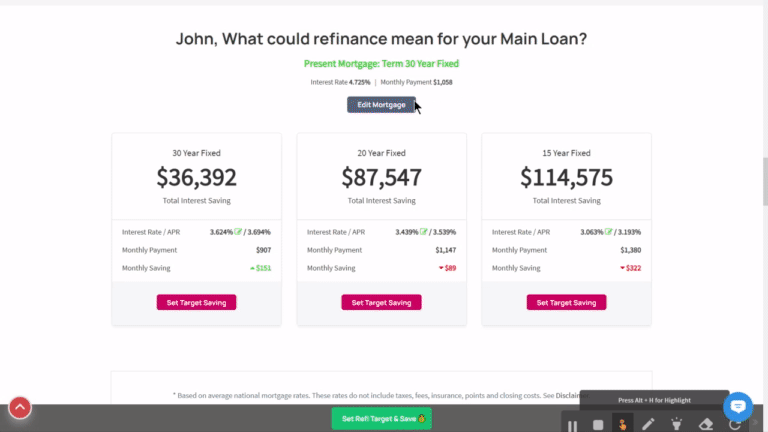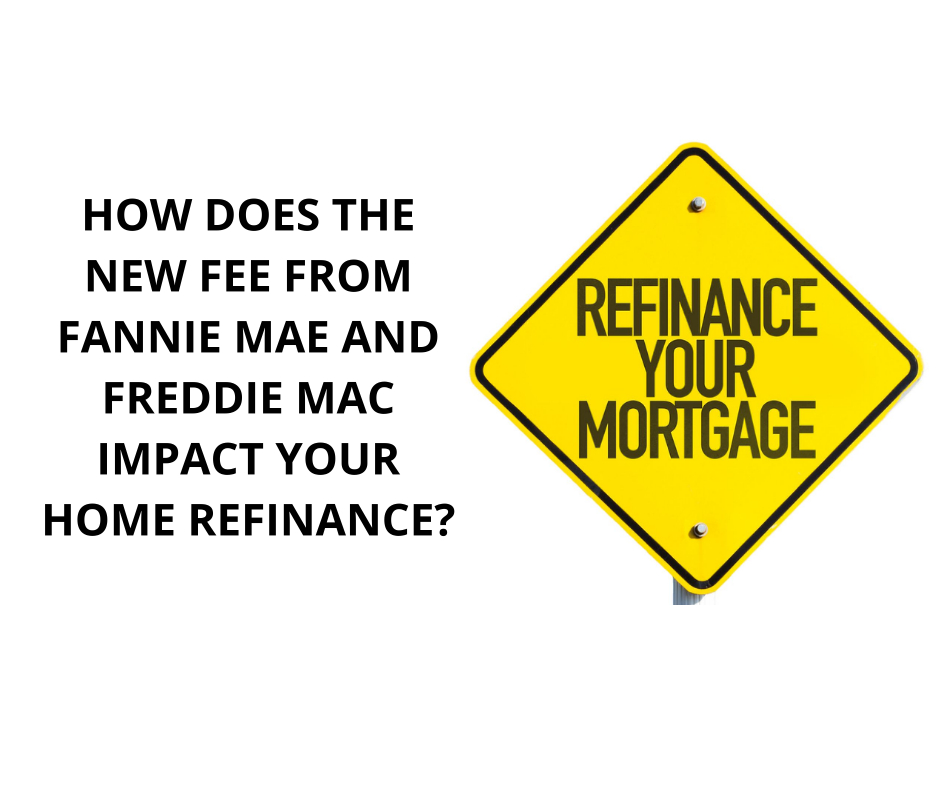Aug 18, 2020 – Fannie Mae and Freddie Mac came out today evening with a big surprise. They will now be charging a 0.5% adverse market fee on all refinances, including both cash-out and non-cash-out refis. The new fee goes into effect Sept. 1.
It does not apply to purchase loans.
Who are Fannie Mae and Freddie Mac?
Fannie and Freddie are not lenders themselves — instead, they purchase loans from lenders, package them into mortgage-backed securities and then sell those securities to investors. Fannie and Freddie also provide guarantees to investors and advance payments even when borrowers are delinquent on the loans.
Why are Fannie Mae and Freddie Mac doing this?
The change is designed to shield the two entities from the additional risk brought on by the coronavirus pandemic. In a letter to lenders, Fannie Mae specifically cited “market and economic uncertainty resulting in higher risk and costs.”
As per Black Knight’s Mortgage Monitor Report, after 30-year rates fell below 3% in mid-July for the first time on record, a record 18.1 million homeowners could refi and lower their rate.
The average savings for those candidates is $289/mo., for an aggregate monthly savings of over $4.5 billion if all candidates were to refinance.
It’s not the first time Fannie and Freddie have imposed a fee like this. In 2007, Fannie Mae imposed a 0.25% surcharge on all mortgages it bought from lenders in response to the burgeoning global financial crisis.
What does it mean for you, the borrower?
This means, if you are doing a $300,000 refinance, Fannie and Freddie will be adding a $1500 charge to your refinance. You can pay this out-of-pocket but most lenders will just add it into the pricing of your loan, which means Fannie and Freddie just made your interest rate go up slightly.
So, if you are saving say $300 per month by refinancing to a lower rate, you would recover this additional $1500 in 5 months.
No reason to freak out or panic. Rates are still at historic lows.
My refi is already in process, what does it mean for me?
If you have locked your rate and your lender cannot complete that loan by Sept. 1, they will be forced to pay the fee. However, if you have not yet locked in a rate with your lender, the cost of the new fee would be passed on to you in most cases.
How do I keep track of the refinance interest rates and what do those rates mean for me?
You could subscribe to InBestments Smart Insights which provides personalized refinance scenarios helping you quickly understand your options and choose what’s right for you.
We have recently introduced a revolutionary new feature, Set Target Savings, which allows you to set your refi target saving in terms of dollars – yes no need to do all the wonky calculations to translate the interest rate’s impact on your potential savings with a new refinance.
You just need to set your target savings, sit back, and relax. InBestments Smart Insights monitors the interest rate for you, calculates what it could mean for you, and alerts you if your target saving can be achieved.
Watch this quick overview of InBestments Smart Insights’ Set Target Saving feature and see for yourself how ridiculously easy and effective it is.

Do you know the best part?
InBestments Smart Insights is absolutely free. It takes less than 30 seconds to subscribe and receive a monthly power-packed report that shows all the options to save more money and build wealth faster with the largest asset you own, your own home.
Click here to sign-up and view a sample Smart Insights report.


